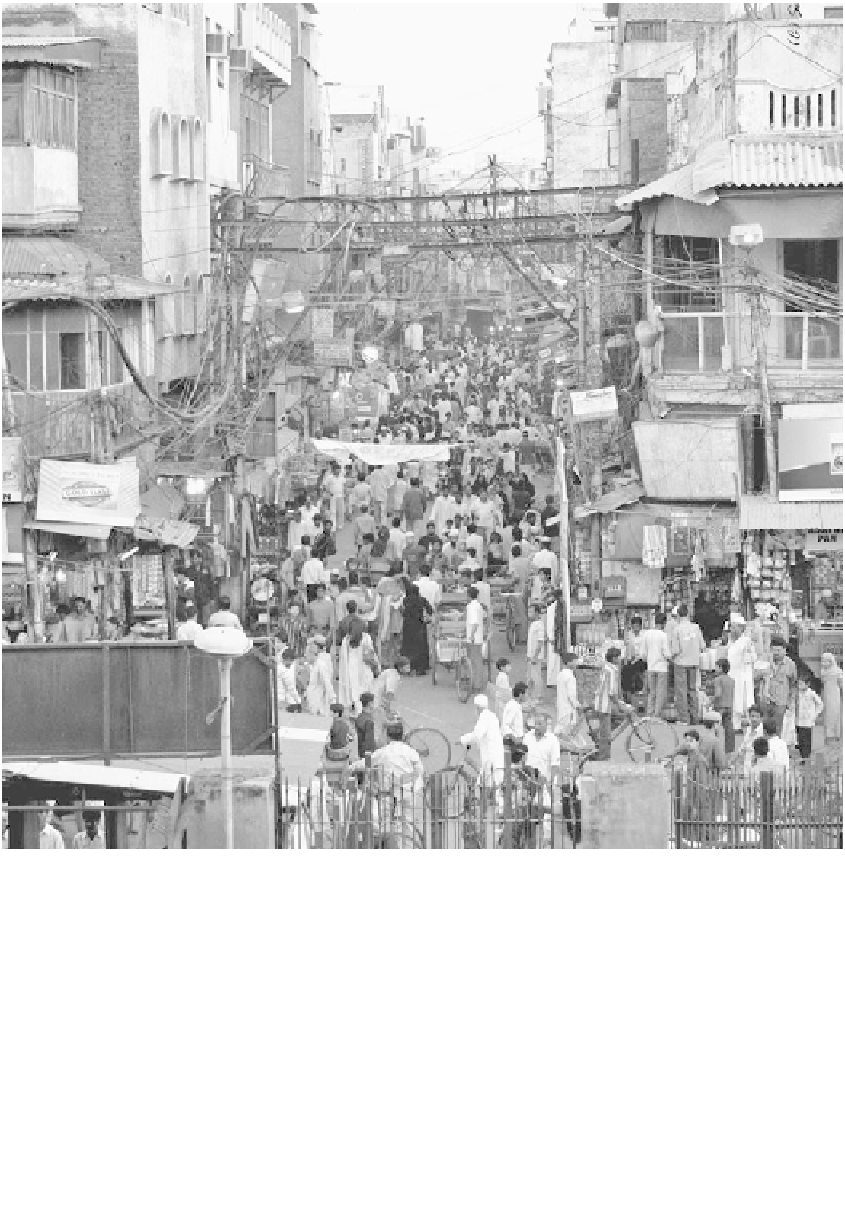Environmental Engineering Reference
In-Depth Information
Figure 5.15
Walking and cycling remain very important modes of travel, particularly for the lower income
groups.
Source
: Santhosh Kodukula.
vehicles/1,000 in 2035, representing a rise in the total vehicle population from 64 to 376
million. If the motorisation rate rises to North American or even European levels then the
space required, and the adverse impacts on the built environment and environment, will be
dramatic. This is the key transport problem facing cities in Asia: the potential for growth in
the motorisation rate multiplied by the large current and projective population. Continued
growth in motorisation is inevitable to a certain extent, and the symbolic value of the car is
very much evident. Many aspire to car ownership, but the rate of growth and level of 'saturation'
needs to be managed to avoid very large impacts on cities, energy consumption and emissions.
This is a difficult message for a population that generally aspires to the Western materialistic


